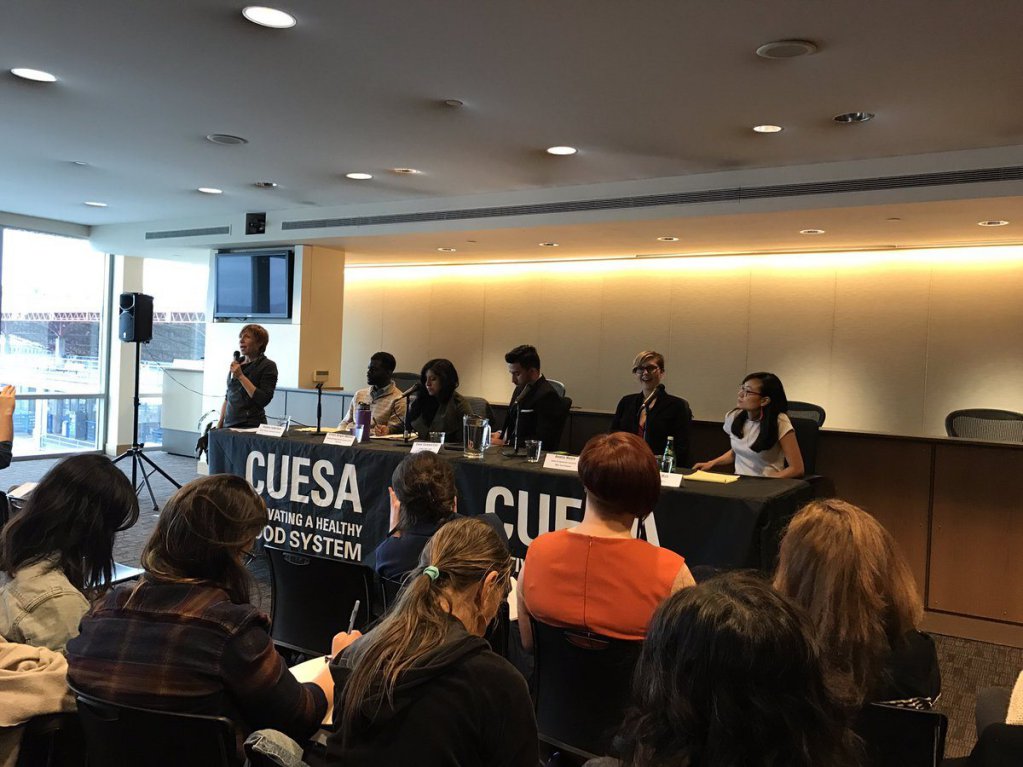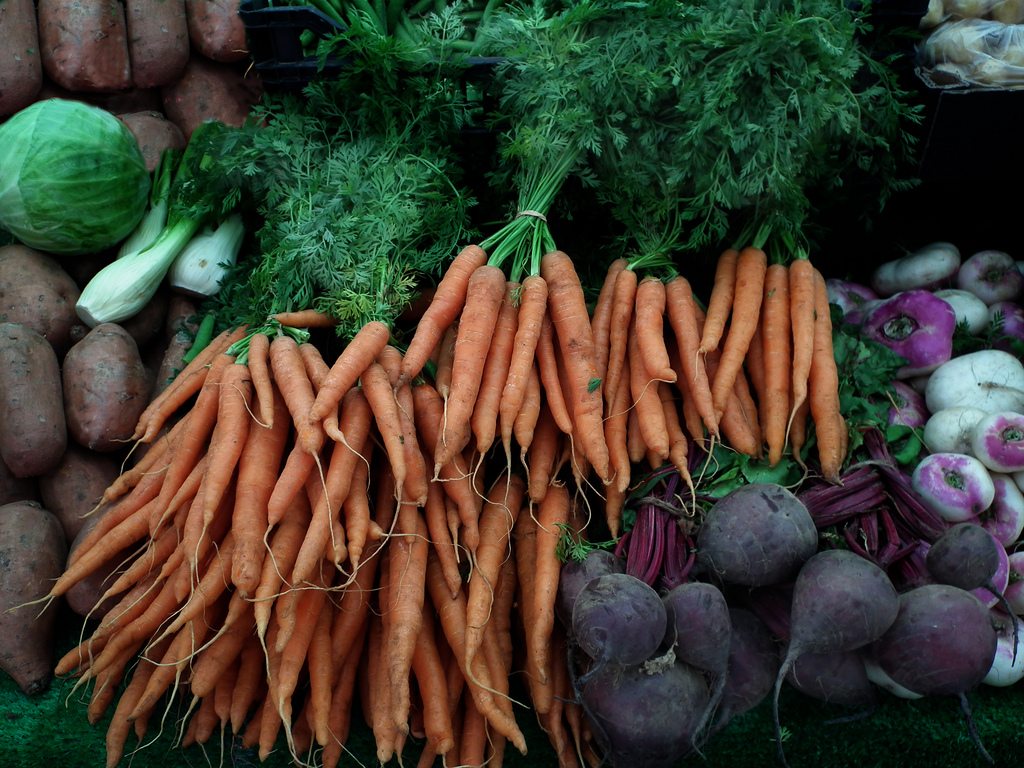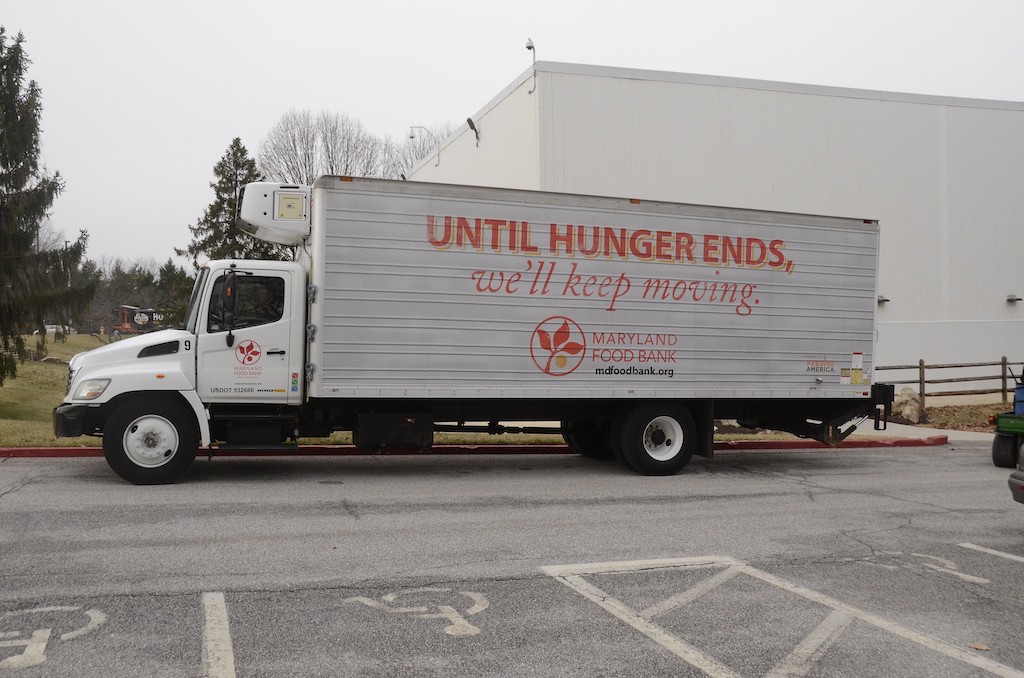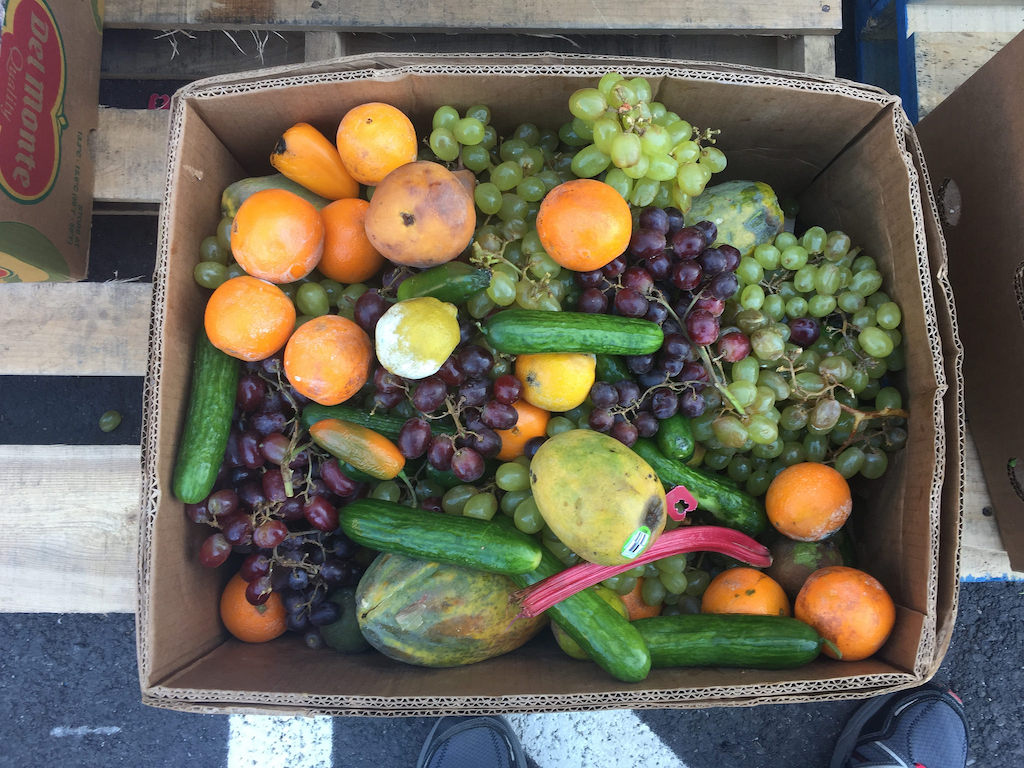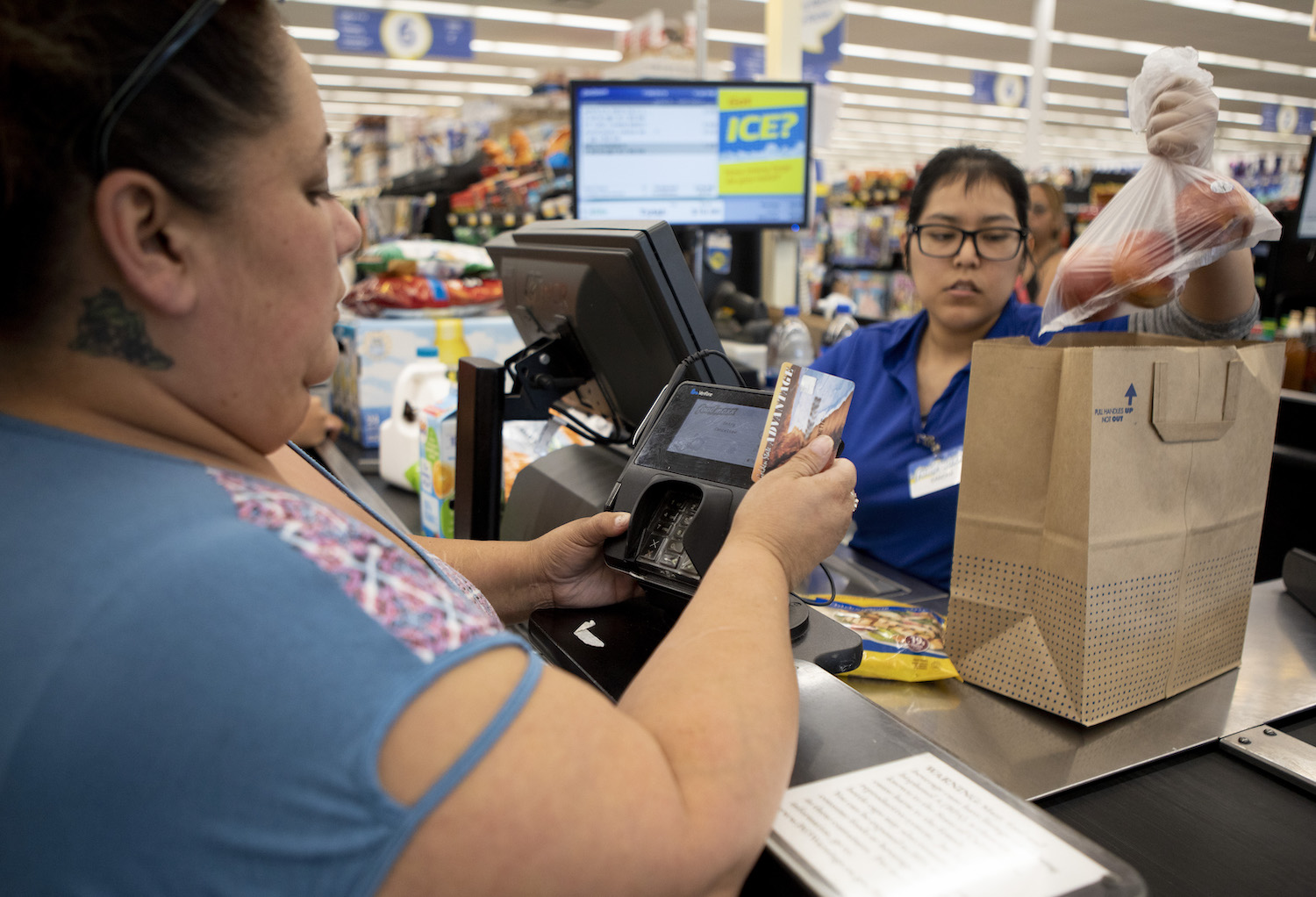
Anne Wernikoff for CalMatters
Adults would no longer receive grocery money under the Trump administration rule if they aren’t working 20 or more hours per week. In California, about 400,000 would be affected in the first year.
Fourteen states, including California, filed suit Thursday against the Trump administration to block a rule that would eliminate food stamps for an estimated 688,000 Americans.
“No one should have to choose between a hot meal and paying their rent,” California Attorney General Xavier Becerra said in a statement. “Yet again, the Trump Administration has failed to offer any legitimate evidence to justify decisions that have real consequences for the health and well-being of our residents.”
This story originally appeared in CalMatters, an independent public interest journalism venture covering California state politics and government. Read the original article here.
The states plus Washington, D.C., and New York City are claiming that the Trump administration failed to follow the steps required to enact such a far-sweeping rule. It’s the latest in a record 65 lawsuits that Becerra has brought against the Trump administration.
The new rule, scheduled to go into effect on April 1, requires that adults without children must work at least 20 hours per week to consistently receive food stamps. In California, that will initially affect about 400,000 Californians, or 11% of people currently getting food stamps, according to the state Department of Social Services.
The social services agency and county welfare departments are scrambling to prepare people who might lose their monthly grocery money from the federal Supplemental Nutrition Assistance Program, known as CalFresh here. Meanwhile, state lawmakers are floating possible work-arounds that could blunt the edge of the federal cuts.
Here’s what you need to know about the federal food stamp cuts, the lawsuit and how California is preparing.
What exactly does the rule do?
Under current federal law, able-bodied adults under the age of 50 with no dependent children must either be working at least 20 hours a week or in vocational training to get food stamps consistently. Otherwise, they can only receive three months of the benefit every three years.
For a decade, states and counties have gotten that limit waived by demonstrating that the local labor market made it hard for people to find jobs. All but six California counties—Alameda, Contra Costa, Marin, San Francisco, Santa Clara and San Mateo—have waivers.
The new federal rule makes that waiver much more elusive in most of the state. A city or county must have an unemployment rate of at least 6% to qualify. California closed 2019 with a statewide unemployment rate of just under 4%.
An estimated 40 California counties would be subject to the 20-hour work requirement starting April 1, while 18 central and northern counties would be spared initially due to their higher unemployment rates.
Why did the Trump administration do it?
When he announced the rule in December, U.S. Agriculture Secretary Sonny Perdue said it will restore the original intent of food stamps: “self-sufficiency.”
“We need to encourage people by giving them a helping hand but not allowing it to become an indefinitely giving hand,” Perdue said in a statement.
But anti-poverty advocates reject the claim that limiting food stamps will encourage people to work more, citing evidence that food stamp work requirements have failed in other places. The initial proposal spurred more than 140,000 public comments, with many calling the policy outdated and cruel.
The Trump administration says the rule would shave $5.5 billion off the federal budget over 5 years. Critics counter that each food stamp dollar translates to $1.54 in economic activity, according to U.S. Department of Agriculture calculations.
Why do the states say it’s illegal?
The attorneys general say the rule violates the Administrative Procedure Act, a federal law that lays out steps, including notification of the public and comment periods, required to make new rules. The Trump administration did not adequately assess the impact of the rule, or how to mitigate its effects, the suit claims.
Plus, the states argue that the rule defies long-standing policy and the original intent of the work requirement law by eliminating the states’ ability to decide whether childless adults must work given local labor markets conditions.
“The Rule unequivocally runs afoul of Congress’s intent to ensure food security for low-income individuals and to permit States, who have a better understanding of their labor markets and economic conditions, to apply for waivers and use exemptions where local or individual circumstances warrant relief,” the lawsuit states.
Who would be most affected?
In the first year, more than 55,000 Californians are expected to lose the benefit, according to Becerra’s office, which amounts to more than $100 million in lost benefits. The lawsuit claims that women and people of color would be most affected because they face higher barriers to employment.
National underemployment data reveals who might be at risk. Black adults are nearly twice as likely as their white counterparts to be out of a job or working part-time even though they’d prefer a full-time schedule. Hispanics, people without a high school degree and adults under 24 also face high rates of underemployment.
Other groups at risk of losing their food stamps include people experiencing homelessness, veterans, people recently out of jail or prison and former foster youth, according to Jessica Bartholow, a policy advocate at the Western Center on Law and Poverty.
For some, having to provide proof of working 20 hours per week may become a roadblock.
“They will have to go through a lot of hurdles to verify eligibility,” Bartholow said. “A lot of people don’t work in places that regularly provide a printed time-sheet.”
What about other food stamp cuts?
This is the first of three Trump proposals to cut food stamps. All are part of a broader set of policies aimed at reducing the country’s social safety net.
Another food stamp proposal would restrict the ability of states to raise the eligibility limit on income and assets, as California has done. The other would set a national standard for deducting utility costs from a household budget to determine food stamp eligibility.
If all three rules go into effect, an estimated 3.7 million Americans, including about 625,700 Californians, would lose food stamps, according to an Urban Institute study.
How is the state getting ready for the rule?
State and county officials are reaching out to all recipients subject to the new requirements, alerting them of the change and getting as many as possible into local employment and training programs. Through those programs, affected adults can keep their CalFresh benefits.
Santa Clara County got a head start. Though it lost its waiver in late 2018, the Social Services Agency used banked exemptions to avoid having to cut anyone off food stamps. In the meantime, the agency has enrolled hundreds in employment programs. But the work ahead is still daunting: More than 600 residents could lose CalFresh this year if they don’t start working.
Deputy Director Angela Shing says she worries that the various federal proposals to cut food stamps are causing people to lose faith in her agency.
“I want people to make sure that if they’re in need that they’re coming to the agency and that we are here to serve,” said Shing. “And I fear that many of these new rules and changes that are coming out are negatively impacting our ability to do that.”
What else could the state do?
State lawmakers and advisors to the governor are exploring ways that the state could provide a bandaid if the rule survives the courtroom.
For the first few months, the state plans to shield people from the new requirements using a backlog of month-long exemptions to the work requirement that the state has been banking. Under the new rule, those exemptions will disappear in the fall.
One solution is to use state funds to provide food stamps. That’s the idea behind a bill introduced last year by Assemblywoman Buffy Wicks, a Democrat from Oakland.
That could be pricey. The state estimates it could lose as much as $400 million in federal funding for CalFresh if all three of the proposed food stamp rules go into effect.
“The state is not in a position to backfill directly the federal contributions by writing a $400 million check,” Governor Gavin Newsom said last week. But, he added, his administration is looking at ways “to significantly minimize” that cost. He said he had put $20 million for food banks in his proposed budget as a “placeholder.”
What’s next?
All eyes will be on the courts. What are the odds that the states’ lawsuit pauses the food stamp cuts? Hard to say, but it’s been done before.
In October, the Trump administration’s “public charge” rule was halted just days before it would have gone into effect, after California and other states sued on similar grounds. That rule, which is still winding its way through the courts, would make it harder for legal immigrants to get green cards if they use, or are deemed likely to use, public assistance.
Jackie Botts is a reporter at CalMatters. This article is part of The California Divide, a collaboration among newsrooms examining income inequity and economic survival in California.

